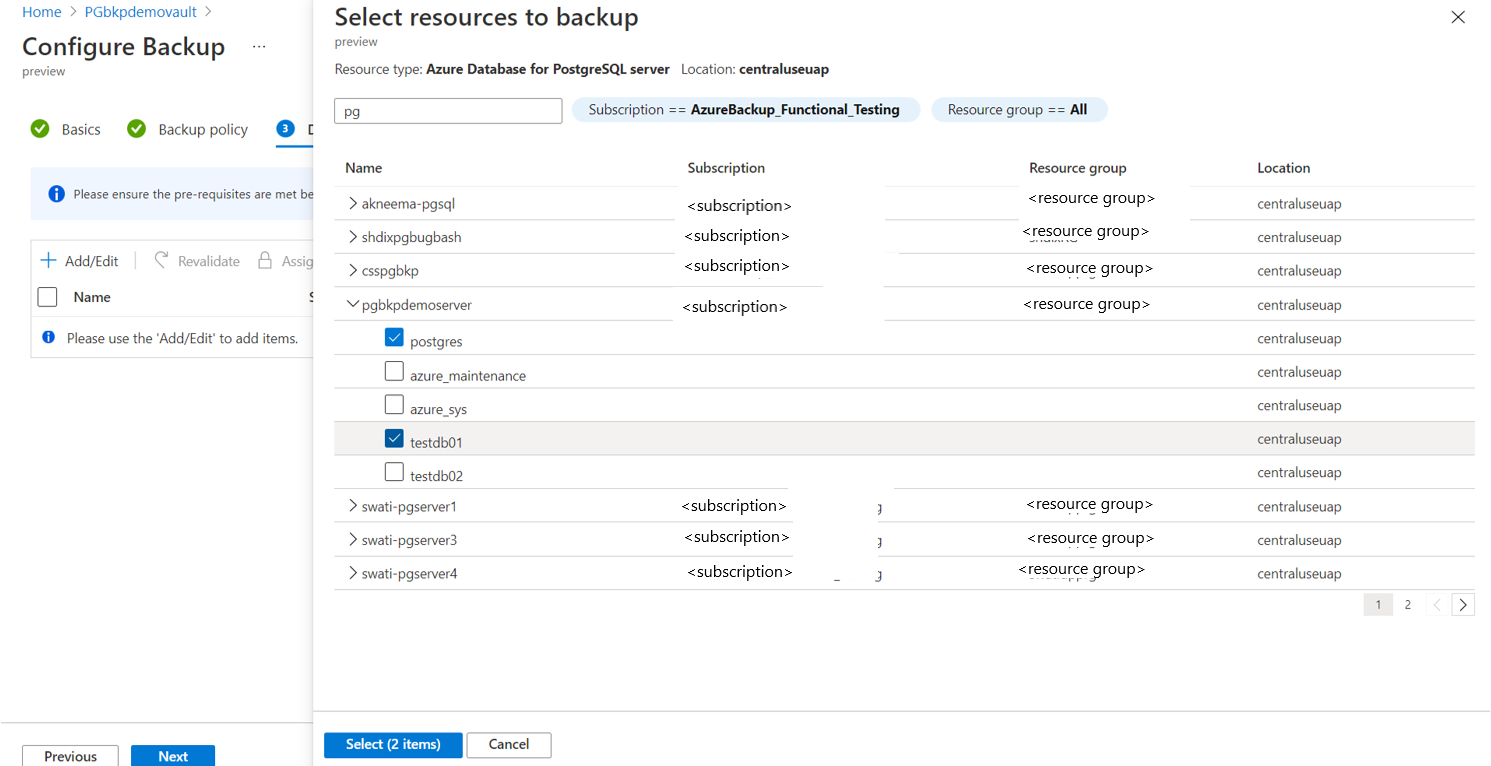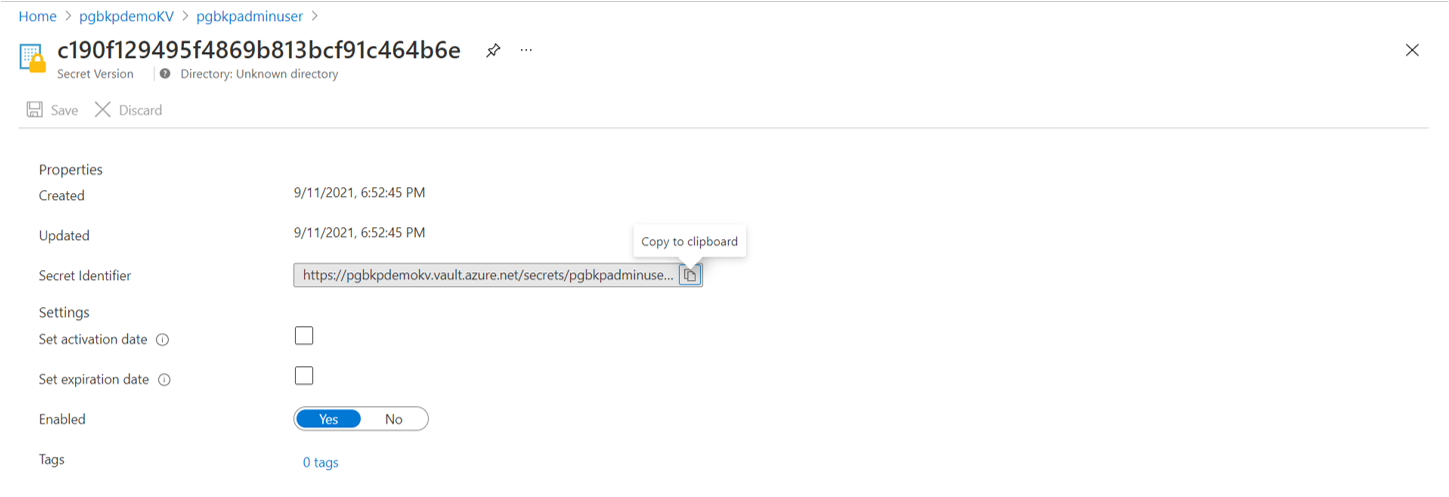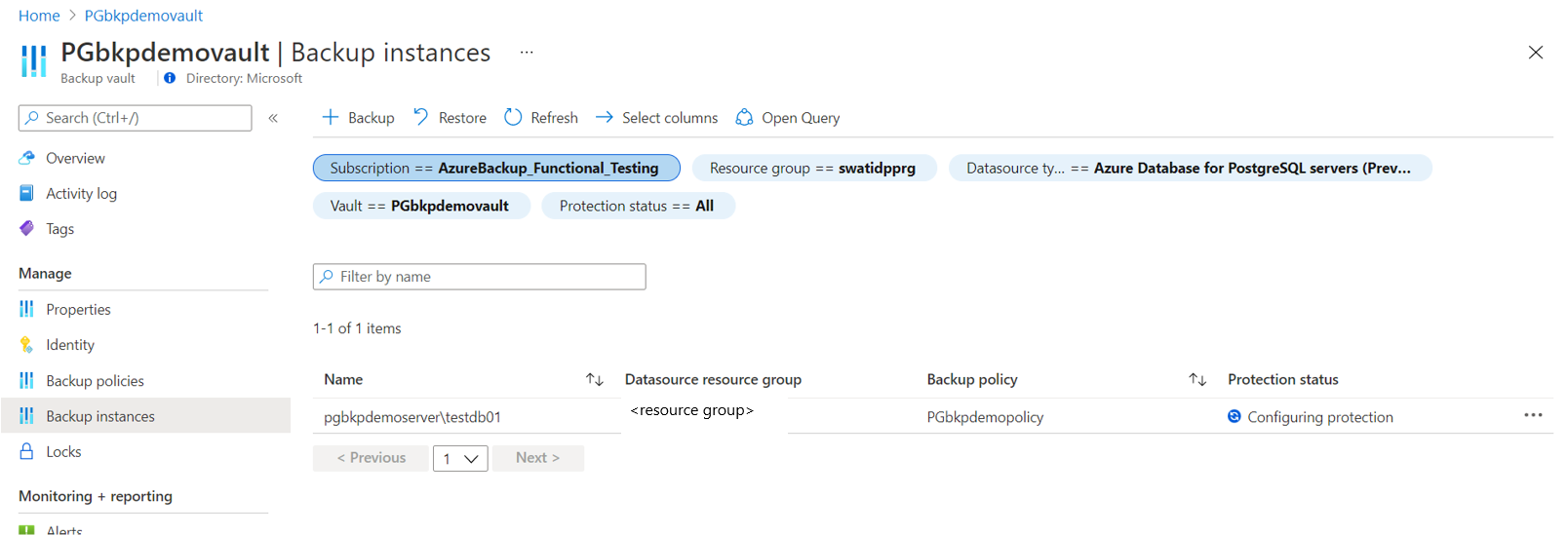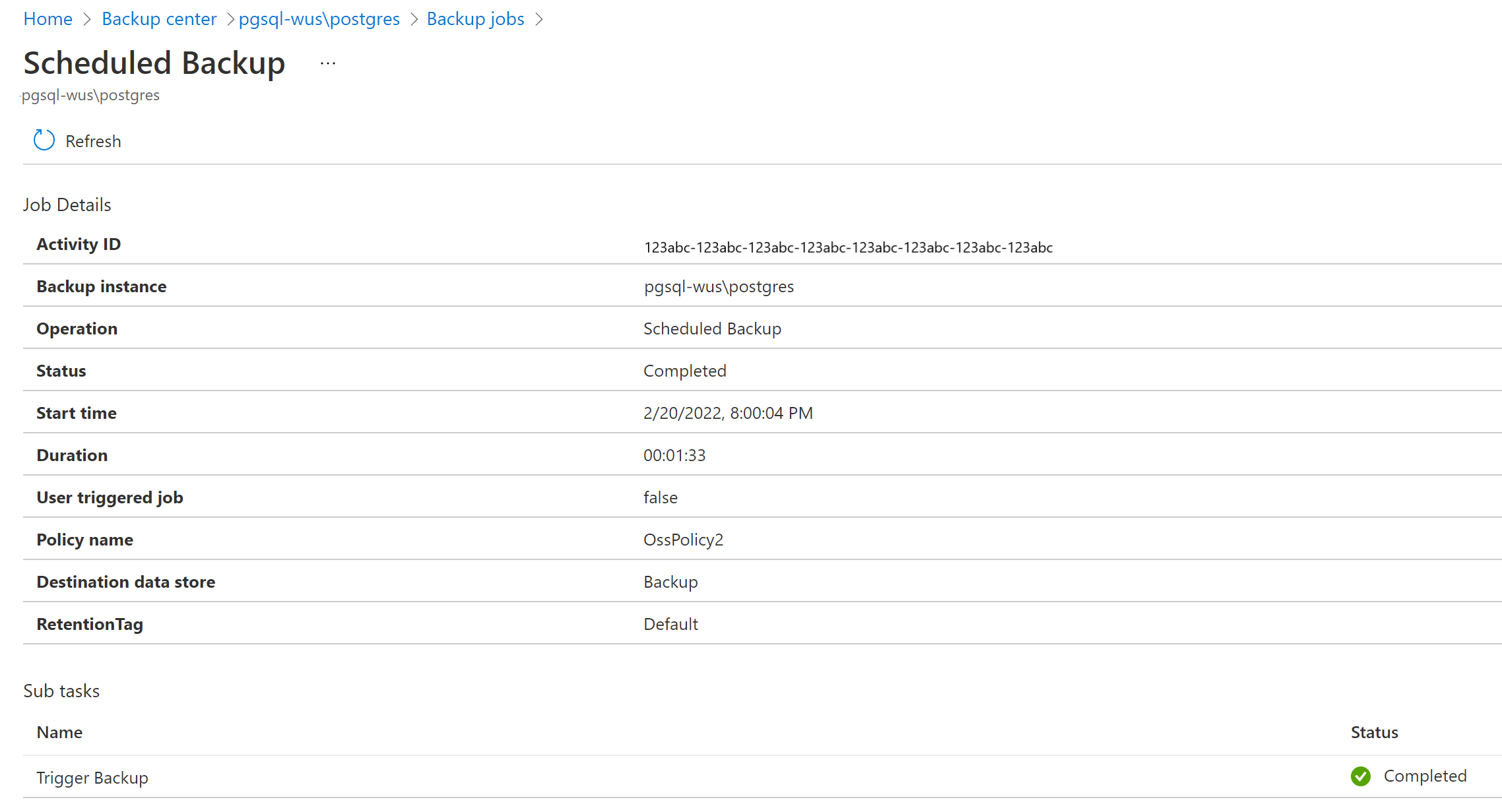Note
Access to this page requires authorization. You can try signing in or changing directories.
Access to this page requires authorization. You can try changing directories.
Azure Database for PostgreSQL is a managed service that you use to run, manage, and scale highly available PostgreSQL databases in the cloud. This quickstart shows you how to back up Azure Database for PostgreSQL server running on an Azure VM to an Azure Backup Recovery Services vault. To create Azure Database for PostgreSQL server, see the tutorial.
Prerequisites
Before you configure backup of Azure PostgreSQL database:
- Identify or create a Backup Vault in the same region where you want to back up the Azure Database for PostgreSQL server instance.
- Check that Azure Database for PostgreSQL server is named in accordance with naming guidelines for Azure Backup. Learn more
- Create secrets in the key vault.
- Grant privileges to database users using PowerShell scripts.
- Allow access permissions for the relevant key vault.
- Provide database user's backup privileges on the database.
- Allow access permissions for PostgreSQL server.
- Create a back up policy.
Learn more about the supported scenarios and frequently asked questions to back up Azure Database for PostgreSQL Database.
Configure backup on the database
You can configure backup on multiple databases across multiple Azure PostgreSQL servers. To configure backup on the Azure PostgreSQL databases using Azure Backup, follow these steps:
Go to Backup vault -> +Backup.
Alternatively, you can navigate to this page from the Backup center.
Select or create a Backup Policy that defines the back-up schedule and the retention duration.
Select Azure PostgreSQL databases to back up: Choose one of the Azure PostgreSQL servers across subscriptions if they're in the same region as that of the vault. Expand the arrow to see the list of databases within a server.
Note
You don't need to back up the databases azure_maintenance and azure_sys. Additionally, you can't back up a database already backed-up to a Backup vault.
Assign Azure Key Vault that stores the credentials to connect to the selected database. To assign the key vault at the individual row level, click Select a key vault and secret. You can also assign the key vault by multi-selecting the rows and click Assign key vault in the top menu of the grid.
To specify the secret information, use one of the following options:
Enter secret URI: Use this option if the secret URI is shared/known to you. You can copy the secret URI from the Key vault -> Secrets (select a secret) -> Secret Identifier.
However, with this option, Azure Backup gets no visibility about the key vault you’ve referenced. Therefore, access permissions on the key vault can’t be granted inline. The backup admin along with the Postgres and/or key vault admin need to ensure that the backup vault’s access on the key vault is granted manually outside the configure backup flow for the backup operation to succeed.
Select the key vault: Use this option if you know the key vault and secret name. With this option, you (backup admin with write access on the key vault) can grant the access permissions on the key vault inline. The key vault and the secret could pre-exist or be created on the go. Ensure that the secret is the PG server connection string in ADO.net format updated with the credentials of the database user that has been granted with the backup privileges on the server. Learn more about how to create secrets in the key vault.
When the secret information update is complete, the validation starts after the key vault information has been updated.
Note
- Here, the Azure Backup service validates if it has all the necessary access permissions to read secret details from the key vault and connect to the database.
- If one or more access permissions are found missing, it'll display one of the error messages – Role assignment not done or User cannot assign roles.
User cannot assign roles: This message displays when you (the backup admin) don’t have the write access on the PostgreSQL server and/or key vault to assign missing permissions as listed under View details. Download the assignment template from the action button and have it run by the PostgreSQL and/or key vault admin. It’s an ARM template that helps you assign the necessary permissions on the required resources. Once the template is run successfully, click Re-validate on the Configure Backup page.
Role assignment not done: This message displays when you (the backup admin) have the write access on the PostgreSQL server and/or key vault to assign missing permissions as listed under View details. Use Assign missing roles action button in the top action menu to grant permissions on the PostgreSQL server and/or the key vault inline.
Select Assign missing roles in the top menu and assign roles. Once the process starts, the missing access permissions on the KV and/or PG server are granted to the backup vault. You can define the scope at which the access permissions should be granted. When the action is complete, re-validation starts.
Backup vault accesses secrets the key vault and runs a test connection to the database to validate if the credentials have been entered correctly. The privileges of the database user are also checked to see if the Database user has backup-related permissions on the database.
PostgreSQL admin will have all the backup and restore permissions on the database by default. Therefore, validations would succeed.
A low-privileged user may not have backup/restore permissions on the database. Therefore, the validations would fail. A PowerShell script is dynamically generated (one per record/selected database). Run the PowerShell script to grant these privileges to the database user on the database. Alternatively, you can assign these privileges using PG admin or PSQL tool.
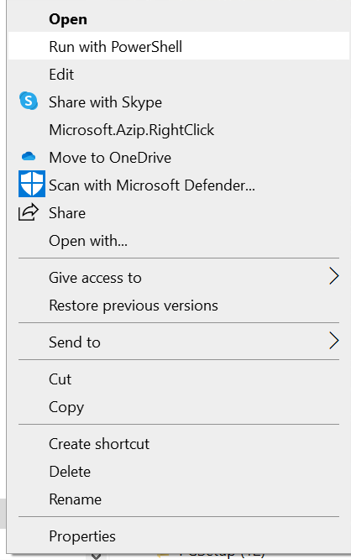
Keep the records with backup readiness as Success to proceed to last step of submitting the operation.
Submit the configure backup operation and track the progress under Backup instances.
Run an on-demand backup
To trigger an on-demand backup (that's not in the schedule specified in the policy), follow these steps:
Go to Backup instances -> Backup Now.
Choose retention rules from the list that were defined in the associated Backup policy.
Track a backup job
Azure Backup service creates a job for scheduled backups or if you trigger on-demand backup operation for tracking. To view the backup job status:
Go to the Backup instance screen.
It shows the jobs dashboard with operation and status for the past seven days.
To view the status of the backup job, select View all to see ongoing and past jobs of this backup instance.
Review the list of backup and restore jobs and their status. Select a job from the list of jobs to view job details.




